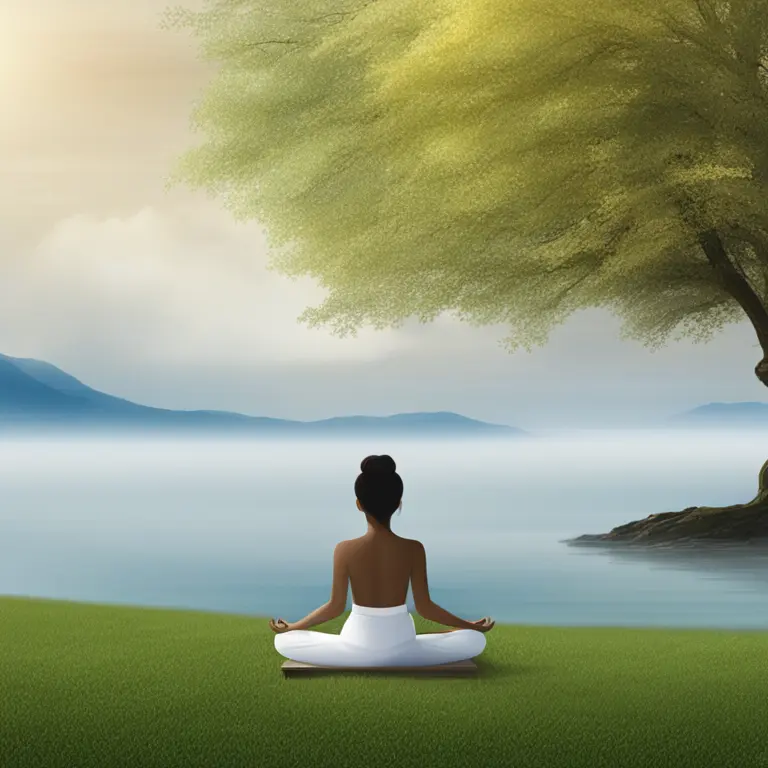
Guided Steps for Mindful Meditation
Embark on a journey of inner peace with our step-by-step guide to Mindfulness Meditation, designed to enhance your mental equilibrium and focus.
article by Hina Kurosawa
Introduction to Mindfulness Meditation
Meditation has long been revered for its capacity to foster a greater sense of peace and mental clarity, but in our fast-paced modern world, it's more important than ever. Mindfulness meditation, in particular, encourages practitioners to anchor themselves in the present moment, fully engaging with their current experiences without judgment. Being mindful promotes higher levels of well-being, improves attention, and increases emotional regulation. In this article, we delve into the simplicity of starting your own practice, aimed at instilling tranquility and awareness into your daily routine.

Creating Your Meditation Space
Before commencing your meditation, select a quiet and comfortable space where you can relax without interruptions. Personalize this area with elements that induce calmness such as soft pillows, natural light, or a small indoor plant. The aim is to create a sanctuary that signals to your brain it's time to unwind. Ensuring a regular location fortifies the habit, making it easier to enter a mindful state over time.

Adopting a Comfortable Position
Your physical comfort is paramount during meditation. Choose a position that suits your body — whether sitting on a cushion, in a chair, or lying down. Your spine should remain straight yet natural, promoting an alert, yet relaxed, posture. Closed eyes can diminish external distractions, but if preferred, you can maintain a soft gaze on a fixed point in front of you.

Engaging in Mindful Breathing
The cornerstone of this practice is your breath — a constant rhythm that effortlessly moves you through life. As you begin, draw your attention to your breathing pattern. Notice the inhalations and exhalations; how your chest and abdomen rise and fall. If your mind wanders—and it will—gently steer your focus back to your breath without admonishment. This simple act anchors you firmly in the present.
Cultivating an Attitude of Non-Judgment
A challenge many face in meditation is the critical inner voice that comments and critiques every thought. In mindfulness meditation, observe these thoughts and feelings as they arise but do so without attaching judgment or significance to them. Recognize them as mere mental events, allowing them to come and go, like leaves floating on a stream, without becoming ensnared in their narrative.
Incorporating Mindfulness in Everyday Life
While setting aside time for meditation is powerful, integrating mindfulness into daily activities can amplify its benefits. Whether you’re eating, showering, or walking, practice being fully present. Sensing the world around you with non-judgmental awareness transforms even mundane activities into a form of meditation, extending peace and focus throughout your day.
Regular Practice Leads to Mastery
Like any skill, proficiency in mindfulness meditation comes with consistent practice. It's not about achieving perfection but rather developing a compassionate understanding of your mental landscape. Start with short sessions, gradually extending the time as you become more comfortable. Remember, each meditation is a unique experience; embrace it with kindness and curiosity.
Published: 1/18/2024
Modified: 1/18/2024
More predictions
Come back here soon to learn more about yourself and your future


How Meditation Reshapes Our Brains
Discover the transformative power of meditation and its profound impact on brain structure and function in this insightful article.


Best Meditation Techniques for Brain Health
Discover effective meditation practices to enhance cognitive functions and maintain a healthy brain.


The Significance of Modern Meditation
Discover the crucial role meditation plays in fostering well-being, focus, and balance in today's fast-paced world.